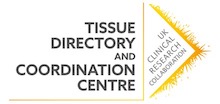HRA publishes new proportionate consent guidance
The Health Research Authority (HRA) have published new guidance on taking a proportionate approach to consent, particularly in reference to clinical trials.
The guidance is intended to be read with the HRA’s existing ‘Consent and Participant Information Sheet Preparation Guidance’. The guidelines have been published in response to concerns that procedures for seeking informed consent have become lengthy and disproportionate to the research. Written material should be accessible and emphasis is placed on verbal communication.
“The methods and procedures used to seek informed consent and the level of information provided should be proportionate to:
- The nature and the complexity of the research;
- The risks, burdens and potential benefits (to the participants and/or society)
- The ethical issues at stake.”
The guidance outlines how to give information to participants, suggesting a layered approach. This involves supplying short, clear information with options for finding out more. This technique means that more detailed comprehensive information is available to those who want it, without bombarding those who don’t. The use of multimedia and timing of consent taking is also discussed.
The following factors should be considered when taking consent:
- The type of research involved.
- The setting of the research.
- The views, convenience and welfare of participants.
- Potential participants should not feel under pressure or coerced into taking part.
- The level of understanding of the participants.
- The potential for harm and/or benefit.
For the full guidance visit the HRA page.
Do you use a layered approach to giving information? Do you use multimedia when taking consent? Let us know your thoughts on the issues raised here.
